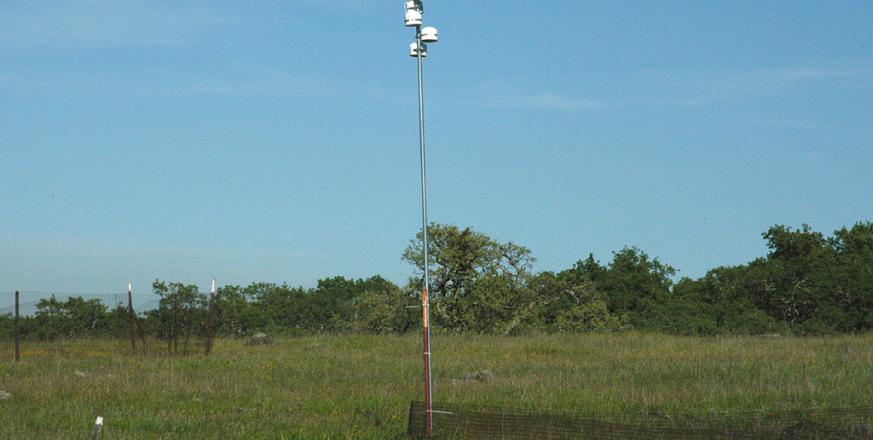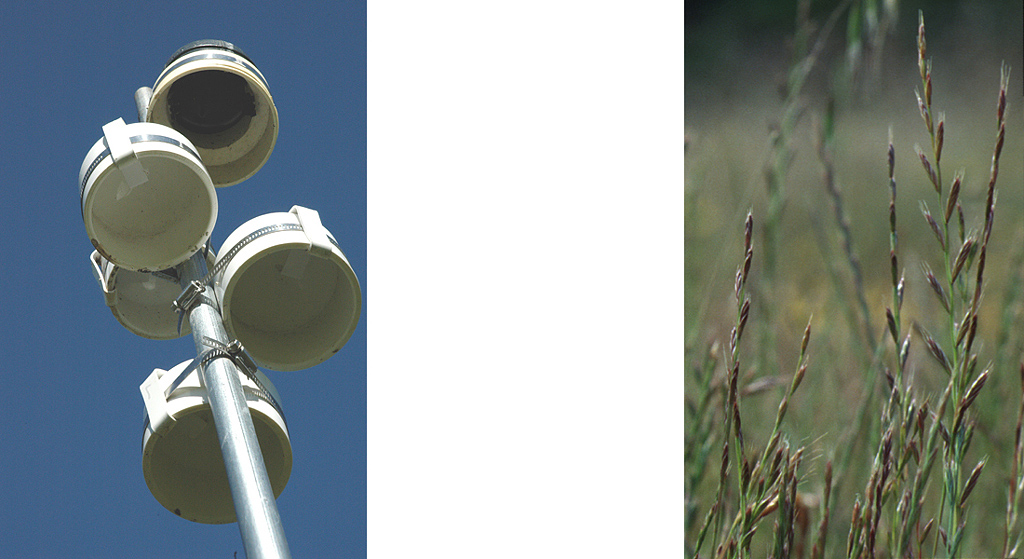Nitrogenous air pollutant monitoring

Summary
Several nitrogen-containing compounds are released to the atmosphere by human activities such as driving automobiles and generating electric power. Ultimately these compounds are deposited on land or water, either in a dry form or carried by rain or fog. This monitoring station is one of eight stations set up by Stu Weiss and David Luth in 2002 to track the amount of airborne nitrogen potentially being added to serpentine grasslands as dry deposition. They are using a passive monitoring device in which inverted cups (picture, lower left) each hold a disc of filter paper with reagents that are specific to different molecules, including NO, NO2, HNO3, and NH3, as well as O3. The samplers track dry, but not wet, deposition. Stu is particularly interested in whether inputs of nitrogen to serpentine grasslands facilitate their invasion by non-native species, especially grasses like annual ryegrass, Lolium multiflorum, which has become increasingly abundant in serpentine grassland at JRBP.
Stu's recent work includes a statewide risk-screening which identified hotspots of nitrogen deposition: coastal urban areas (Los Angeles-San Diego, and the San Francisco Bay Area), the agricultural Central Valley, and parts of the Sierra Nevada foothills. He estimates that up to 20 pounds of nitrogen are deposited per acre of land in some Bay Area locations, enough to strongly favor invasive annual grasses.
By comparison with Stu's serpentine grassland sites just south of San Jose or adjacent to highway 280, Jasper Ridge is relatively--but not completely--free of nitrogen-containing atmospheric pollutants. Nonetheless, annual ryegrass has become a significant component of the serpentine grassland flora. This may suggest that even small quantities of nitrogen deposition favor invasion by non-native grasses and/or that other factors are responsible.
Project Location (Sector 24)
 |  |  |  |  |  |  |  |  |
 |  |  |  |  |  |  |  |  |
 |  |  |  |  |  |  |  |  |
 |  |  |  |  |  |  |  |  |
 |  |  |  |  |  |  |  |  |
 |  |  |  |  |  |  |  |  |
Useful Links
Visible from Trail/Road
F - Grassland Fire Road




